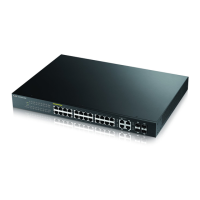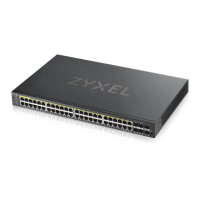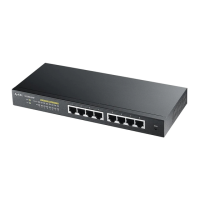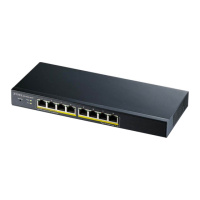Chapter 56 AAA
GS1920v2 Series User’s Guide
345
track when users log in, log out, execute commands and so on. Accounting can also record system
related actions such as boot up and shut down times of the Switch.
Local User Accounts
By storing user profiles locally on the Switch, your Switch is able to authenticate and authorize users
without interacting with a network AAA server. However, there is a limit on the number of users you may
authenticate in this way.
RADIUS
RADIUS is a security protocol used to authenticate users by means of an external server instead of (or in
addition to) an internal device user database that is limited to the memory capacity of the device. In
essence, RADIUS authentication allows you to validate an unlimited number of users from a central
location.
RADIUS and TACACS+
RADIUS and TACACS+ are security protocols used to authenticate users by means of an external server
instead of (or in addition to) an internal device user database that is limited to the memory capacity of
the device. In essence, RADIUS and TACACS+ authentication both allow you to validate an unlimited
number of users from a central location.
The following table describes some key differences between RADIUS and TACACS+.
56.2 RADIUS Server Setup
Use this screen to configure your RADIUS server settings. Click SECURITY > AAA > RADIUS Server Setup to
view the screen as shown.
Table 193 RADIUS vs. TACACS+
RADIUS TACACS+
Transport
Protocol
UDP (User Datagram Protocol) TCP (Transmission Control Protocol)
Encryption Encrypts the password sent for
authentication.
All communication between the client (the Switch)
and the TACACS server is encrypted.
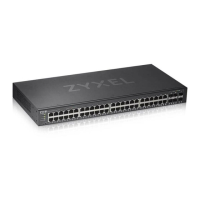
